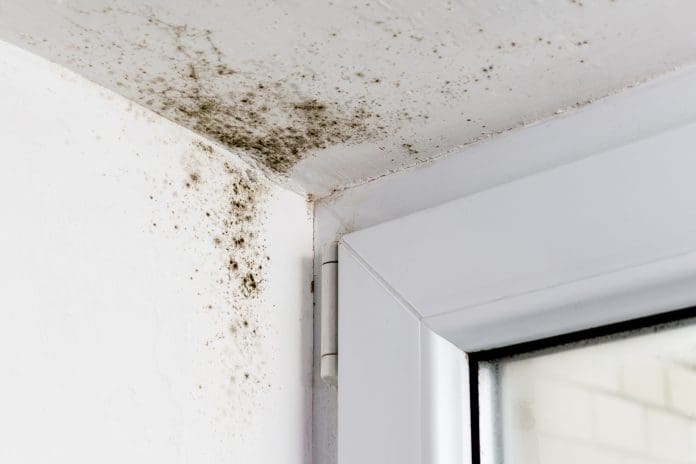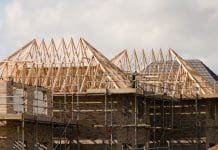Mould occurs naturally and the spores that cause it are surrounding us every day. So why in 2024 is new build mould becoming a challenge for the sector? Andrew D Thompson FRICS, a postgraduate researcher at Anglia Ruskin University undertaking a professional doctorate looking at housing fitness for human habitation, takes a look
The current change in mould awareness can be traced back to the tragic death of two-year-old Awaab Ishak in December 2020, and the ruling that mould can be fatal and not simply an issue that exacerbates other health conditions.
The events in Rochdale occurred in a social housing landlord and tenant context and as such, the consequences of the coroner’s report have taken time to ripple across different sectors.
In September last year, the UK government issued Understanding and Addressing the Health Risks of Damp and Mould in the Home.
Government response to reports of new build mould
Outside of the landlord and tenant sector, the potential impact for wider areas of built environment professional practice, such as pre-purchase reports and design consultants in the new build sector, is contained within the following government statement: “We are absolutely clear that it is totally unreasonable to blame damp and mould in the home on ‘lifestyle choices’.
“It is unavoidable that everyday tasks, such as cooking, bathing, washing and drying laundry will contribute to the production of indoor moisture.
With this in mind, the fundamental cause of damp and mould will be due to building deficiencies, inadequate ventilation, inadequate heating and/or poor energy efficiency, not tenants’ normal domestic activities.”
Historically, a designer accused of mould would have argued they had followed the technical minimum expectations within the Building Regulations.
Now, with the defence that mould is due to poor decisions of the occupier having been declared unreasonable, the very existence of a mould bloom evidences failure in design.
A home under the latest guidance should be designed in such a way as to never provide the environmental conditions for mould, meaning that design teams will need to reflect on the internal environmental conditions the property creates and have strategies in place to control the conditions.
Claim management companies have been active in the landlord-tenant sector, and the professional indemnity insurance-rich world of the pre-purchase report, and unfitness for human habitation claims within the new build sector, could be seen as the next opportunity.
An occupier of a residential property is the same person in terms of health risk regardless of the legal distinction between owner and tenant.
While routes of recovery and rights may differ in fine detail, the fundamental health risk and the ultimate fitness for human habitation are identical.
The new build sector risk
The primary cause of mould growth within the home is condensation. The science behind this is well understood, and the relationship between the three key factors is explained within BRE BR466 Understanding Dampness.
While defects within the structure should under competent design be limited, the construction process brings with it use of wet trades that as the natural consequence of the fabrication leaves water within, so excess vapour is within the fabric of the building.
This can linger for potentially 24 months post-development, subject to the weather conditions and time of completion of the unit.
New build design could create a mould-friendly environment
Decisions to design out windows to bathrooms or kitchen areas, placing the emphasis on mechanical ventilation, seeking to install minimum-sized energy-rated heating and the increased ability to design out draught via air-sealed details, create a mould-friendly environment.
Minor efficiency defects in ventilation systems, due to bends in duct work, can cause further issues. During a cost-of-living crisis when the public are encouraged to save money by turning down their heating, the perfect combination of events is triggered.
Looking to the landlord sector, mould blooms are seeing the requirement for post-handover upgrade works to new units via installation of positive input ventilation (PIV), which are seen as a solution to tenant condensation.
The system’s sensors remove occupier control and regulate the air quality automatically, across a continuous period. In pragmatic terms, the latest government guidance is making PIV a default design minimum in all properties unless the balance can be preserved via alternative methods, such as opening a window.
In modern design, the humble window had fallen out of fashion, with bathrooms and kitchens becoming blank wall areas.
Should we therefore be surprised that windowless, high-moisture rooms, totally reliant on occupier control of mechanical ventilation, have created mould zones? Designs and specifications of extractors and local heating is likely to be challenged in the future.
Professional landlords who have purchased units in recent developments are going to be unhappy that they are facing significant upgrade works on their modern asset stock.
As the Decent Homes Standard expands into the private rented sector, the buy-to-let micro landlord that has been using pre-purchase survey reports could look back at their purchase decision and ask where was the warning?
Mould is a risk to human health
The Building Safety Act 2022 has adjusted the Defective Premises Act 1972 and, combined with other legislative changes, damp and mould is expressly listed as an issue under fitness for human habitation.
Mould has proved to have no respect for the age of property and as a fitness for human habitation defect, the new ability to seek redress for latent defect could trigger a negligence claim.
This limitation period has now been extended to 30 years retrospectively for claims accruing before 28 June 2022, and to 15 years for claims accruing after 28 June 2022, compared with the original six years before the change.
Landlord investors are asking why they are having to install PIV and why these measures to proactively control mould have been omitted in the original design.
The potential for recovery action against the original design team is already rumoured to be leading to out of court Professional Indemnity Insurance settlements.
Recent case law in the form of Hart v Large provides an uncomfortable precedent for potential pre-purchase surveyors inspecting modern properties.
In this case, Mr Large undertook an inspection of a property that had been subject to extensive modernisation building works.
Unfortunately, post the completion of the purchase, the dampness was noted by the purchaser, and eventually, this was traced to a missing damp proof membrane.
The outcome was a negligence decision, even though the court accepted the high level of professional service provided by Mr Large in his inspection and post-purchase customer care.
So, following the logic of this Court of Appeal decision, a pre-purchase surveyor who fails to warn of condensation and mould risk due to any inadequacies in the heating and ventilation system will be exposed to a claim in the event of a mould bloom.
Pre-purchase surveyors of new builds are now likely to take a protective stance and seek warranties and guarantees to ensure the liability risk is robustly shifted towards the original design team.
Andrew D Thompson FRICS
Postgraduate researcher
Anglia Ruskin University
Tel: +44 (0)1245 493131














